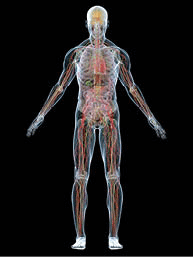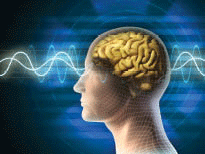
The sequence of “just right” events and circumstances that had to be in place in order for you and me to even exist is nothing if not amazing. There first had to be a beginning to our remarkable universe, conceived in detail and intricately designed prior to its arrival.
The one-time creation of “something” from “nothing” was more than a neat trick. It was and is the ultimate reality. From that incomprehensible “big bang” explosion (really more of a highly fine-tuned, rapid expansion) the initial elements were formed. You needed precise laws of physics in place to control the expansion rate and the force of gravity (which must be one part in ten thousand billion, billion, billion, billion weaker than the strong nuclear force). Equally precise are the strength of the weak nuclear force and electromagnetism. You needed a process in place to create heavier elements in the furnaces of stars. The stars need to assemble into galaxies to provide homes for planets.
But galaxies and stars are not all the same. We have a very unique star and a very unique galaxy. And we are “fortunate” to be in just the right place in our just right galaxy. We have already pushed chance beyond its limit.
But we have not even looked at our planet yet. It is common to think that all one needs for life is a rocky planet and water in a liquid state. A short list of required features would fill the rest of this page. You also need the right size planet made out of the right materials. Without heavy metals in earth's core, there would be no life. You need just the right thickness of crust with silicate minerals in the surface material to allow plate tectonics (providing nutrients and land mass) to work. You need just the right amount of surface water with just the right land-mass-to-water-ratio. You need the right axis tilt, the right spin rate. We are not close to being done.
 You need a moon of just the right size (larger than most) to stir the oceans, to maintain earth's axis tilt and help maintain our rotation rate. You need the right number and positioning of other planets (celestial harmonics), which affects the long-term stability of our orbit. The atmospheric composition must be just right including a thin ozone layer to block much of the ultraviolet light from the sun. You need a molten core to produce a magnetic field to block the solar wind from destroying the ozone layer. The list goes on, seemingly forever.
You need a moon of just the right size (larger than most) to stir the oceans, to maintain earth's axis tilt and help maintain our rotation rate. You need the right number and positioning of other planets (celestial harmonics), which affects the long-term stability of our orbit. The atmospheric composition must be just right including a thin ozone layer to block much of the ultraviolet light from the sun. You need a molten core to produce a magnetic field to block the solar wind from destroying the ozone layer. The list goes on, seemingly forever.
Once everything is in place, you can then look at introducing life. But life is not a natural consequence of these things. Life requires an injection of information. Living things are amazingly complex. DNA is information-rich and includes building instructions for all living things. Each cell in your body is a literal factory that includes a receiving department, a staging area, a maintenance department, scheduling, transportation devices, waste control, a rework area, specifications that are translated, reproduced and forwarded to manufacturing.
 The cell has assembly lines where proteins are produced. There are no less than 24 quality-control checkpoints in place. If a protein is damaged during production, it gets a chemical tag. If enough tags are attached, the protein is removed from production and sent to a receptacle where it is disassembled. The good parts are returned to staging, and the defective parts are carried by one machine to another machine which paddles it outside the cell. There are hundreds of literal machines in each of the trillions of cells in your body. (One person, reflecting on this, observed, “… You'd think it would tickle.”)
The cell has assembly lines where proteins are produced. There are no less than 24 quality-control checkpoints in place. If a protein is damaged during production, it gets a chemical tag. If enough tags are attached, the protein is removed from production and sent to a receptacle where it is disassembled. The good parts are returned to staging, and the defective parts are carried by one machine to another machine which paddles it outside the cell. There are hundreds of literal machines in each of the trillions of cells in your body. (One person, reflecting on this, observed, “… You'd think it would tickle.”)
 Each cell includes a power plant, a cafe, and everything you see in a factory built by humans. And the factory in the cell can completely reproduce itself in one day.
Each cell includes a power plant, a cafe, and everything you see in a factory built by humans. And the factory in the cell can completely reproduce itself in one day.
So all of this and hundreds of other examples of complexity in living things are there for us to observe. The flagellar motor moves bacteria through liquid cellular environments. These motors mimic exactly the outboard motor on a boat. The flagellar motor includes a propeller, a drive shaft, a clutch, a stator, bushings, a rotation-switch regulator, sensors, etc., etc., etc. It can rotate at up to 100,000 rpm, stop on a quarter turn, and reverse direction without blowing itself to smithereens.
The human body itself is a miracle of design. Read what it takes for blood-clotting to occur. Look at the ingenious use of bacteria to assist with food digestion and many other functions. Look at the eye, more advanced than any camera, and the ear, which uses three bones to reproduce the sound of the most expensive sound systems. Look at how oxygen is transferred from the lungs to the blood, and how the blood travels throughout the venous system to oxygenate and feed the cells, and pick up and filter-out waste. And we have not scratched the surface in any of this.
 Consciousness is taken completely for granted. Why do we ponder? Why do we contemplate? Why do we consider past, present, and future events? Why do we wonder?
Consciousness is taken completely for granted. Why do we ponder? Why do we contemplate? Why do we consider past, present, and future events? Why do we wonder?
When people achieve their personal goals, winning an Olympic gold metal, having an album go platinum, making it to the top of the corporate ladder, whatever it might be, they often come to the same conclusion in reflective moments — “Something's missing.”
The Olympics are fine. Selling albums is fine. Having a successful business career is fine, but only in the proper perspective. Matthew put it succinctly, “What does it profit a man to gain the whole world and lose his soul?”
 For most people something's missing. Life does not make sense. Considering all that had to be put in place for us to exist at all begs the question, “To what end?” The big three questions have plagued mankind from centuries past: Why are we here? What are we to be doing? What comes next?
For most people something's missing. Life does not make sense. Considering all that had to be put in place for us to exist at all begs the question, “To what end?” The big three questions have plagued mankind from centuries past: Why are we here? What are we to be doing? What comes next?
So we fill our time with sports, with recreation, with partying, with our jobs, with drinking, with games, with “sex, drugs, and rock & roll,” with politics, with hobbies, with endless, mindless pursuits. What is the point? Does not all the design in place infer a Designer, a Designer with a plan for us? Should we not spend at least a little time trying to get to know the Designer and find out if there might be a bigger purpose to our lives?
Picture credits:
© 123dartist. Image from BigStockPhoto.com.
© duallogic. Image from BigStockPhoto.com.
© SSilver. Image from BigStockPhoto.com.
© Eraxion. Image from BigStockPhoto.com.
© Thufir. Image from BigStockPhoto.com.
© ptnphoto. Image from BigStockPhoto.com.
